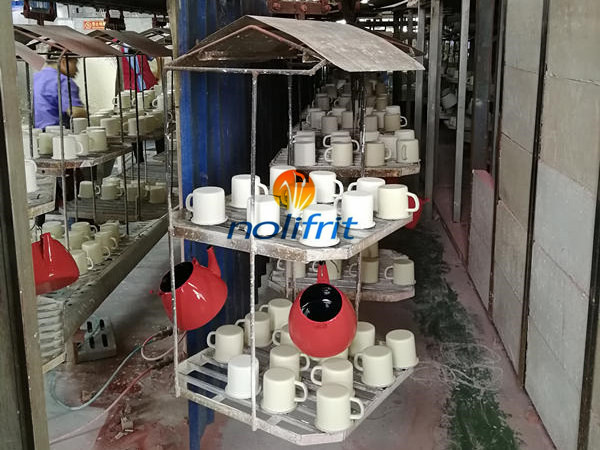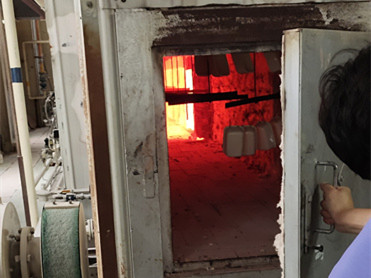The Firing Process of Enamel Cover Coat
The firing of the enamel cover coat is to fuse the interface between the enamel cover coat and the enamel ground coat, and obtain the ideal color, the surface is bright and delicate, and has the physical and chemical properties of acid, alkali, water, atmosphere and other physical and chemical properties.
When the firing reaches a certain temperature, the enamel ground coat and the enamel cover coat are softened together, and an inter-diffusion intermediate layer is formed on the interface, so that they form a good combination. The quality of the combination mainly depends on the softening temperature, viscosity, and The degree of mutual matching of the expansion coefficient and other properties.
Generally, the firing temperature of the enamel cover coat is about 20°C lower than that of the ground coat. If the ground coat is more meltable than the cover coat, it may cause dark spots and black fringes on the surface of the cover coat. If the ground coat is too difficult to melt, the composite intermediate layer between the cover coat and the ground coat is more difficult to form and the combination is not good. Therefore, the firing temperature of the ground coat and the cover coat must be matched appropriately.
The firing temperature of the cover coat of thin steel plate daily enamel products should reach 850°C from 0 to 75 seconds, then maintain for about 25 seconds, and finally slowly reduce to 400°C from 100 to 120 seconds, and finally the green body is reduced to room temperature.
There are five different stages in the main reaction, state change and characteristics of the enamel cover coat during the firing process:
In the first stage, the room temperature is ~150°C, the main reaction is to remove the adsorbed water of the enamel cover coat powder layer, and the organic matter is decomposed (urea is decomposed at 135°C).

In the second stage at 150~400°C, gas and structural water are removed, micro cracks and small holes appear in the powder layer, and a solid phase reaction occurs between the interface of the ground coat and the cover coat.
In the third stage, 400~600°C, the low melting point compounds begin to melt, the powder layer is sintered, the interface between the ground coat and the cover coat begins to diffuse and penetrate each other, the structural water of the clay is further removed, surface cracks, small holes begin to merge, and the cover coat is completely sintered , There are still a lot of air bubbles in the inner layer, and the parts begin to soften.

In the fourth stage, 600°C~sintering temperature, the powder layer has basically melted, the inter-penetration between the ground coat and the cover coat is intensified, the middle layer is gradually formed, the bubbles in the inner layer are further eliminated, the middle layer grows, and the opacity and coloration are gradually improved.
The fifth stage lasts for a period of time after reaching the firing temperature. The enamel glaze reaction basically ends. The intermediate layer of the enamel ground coat and the enamel cover coat interface has been completely formed, the opalescence has been completely completed, the gas has been basically eliminated, and the enamel products are ready to be released.